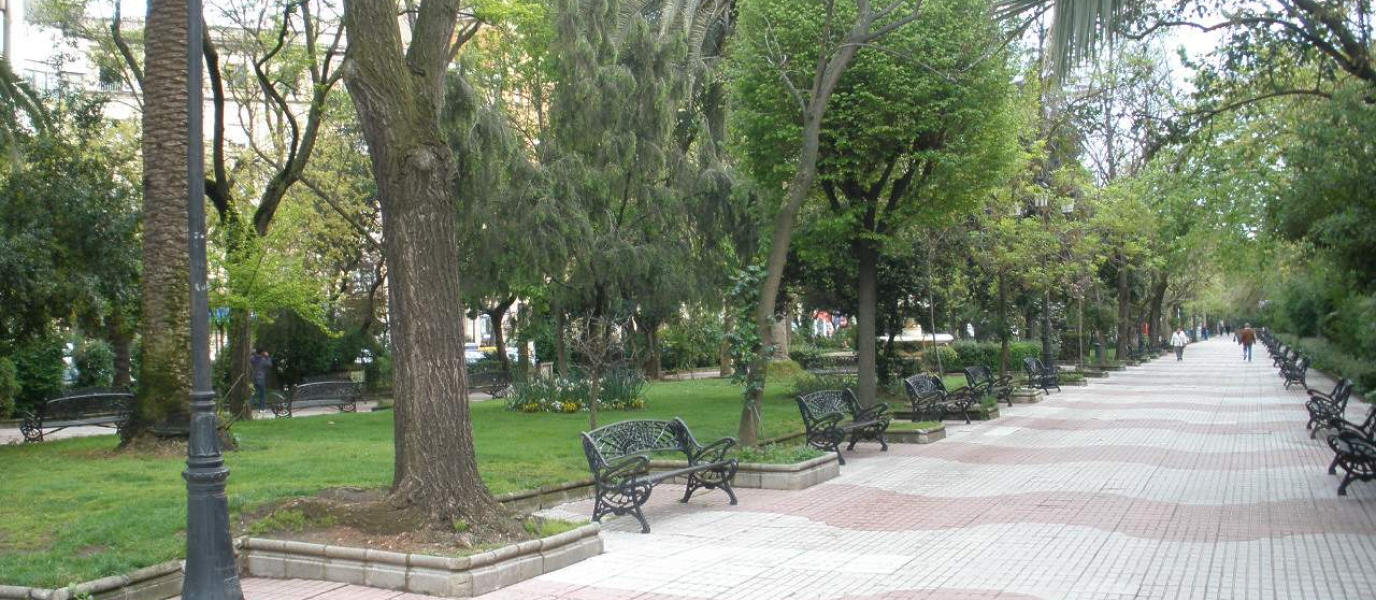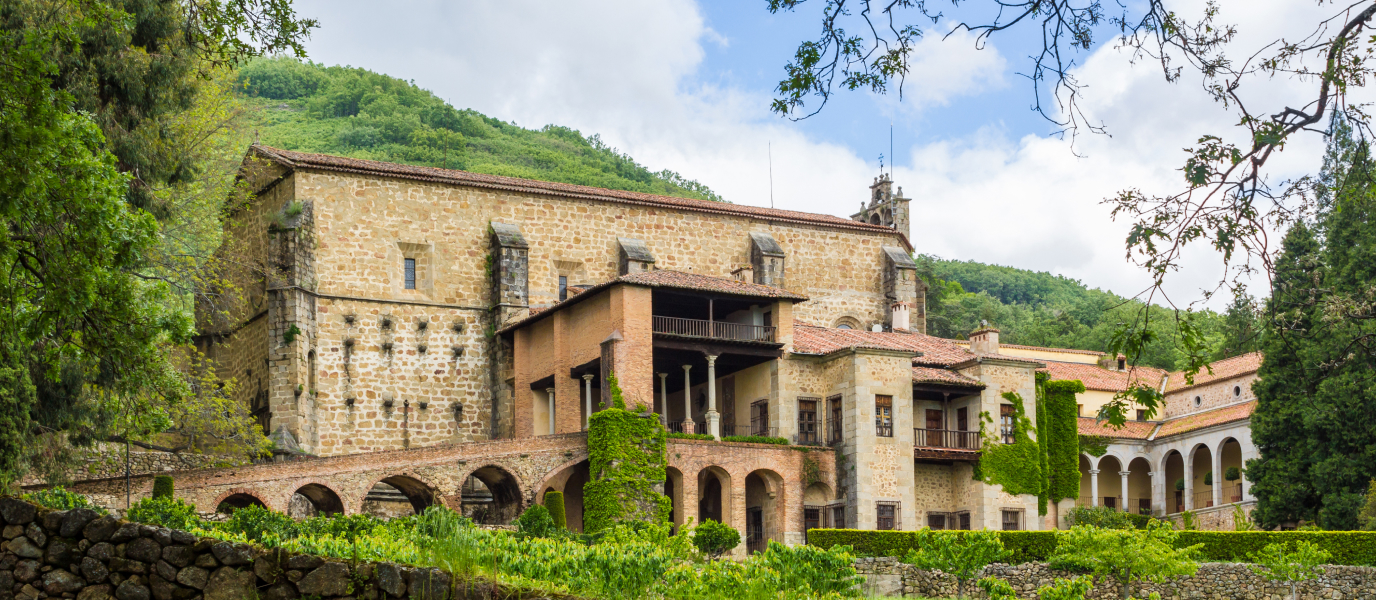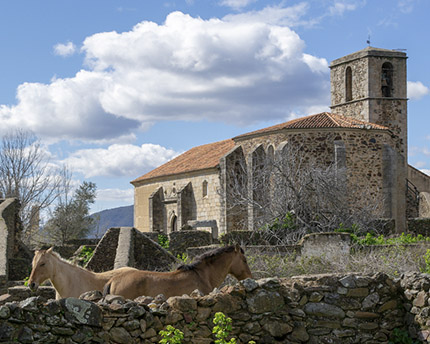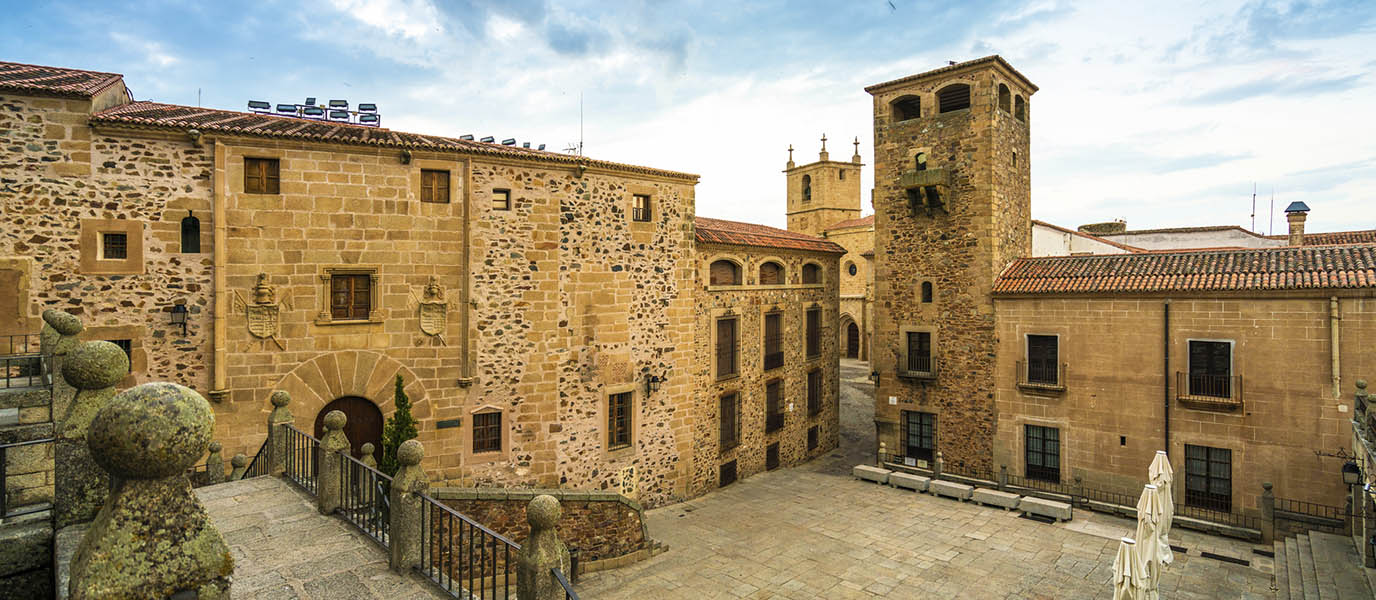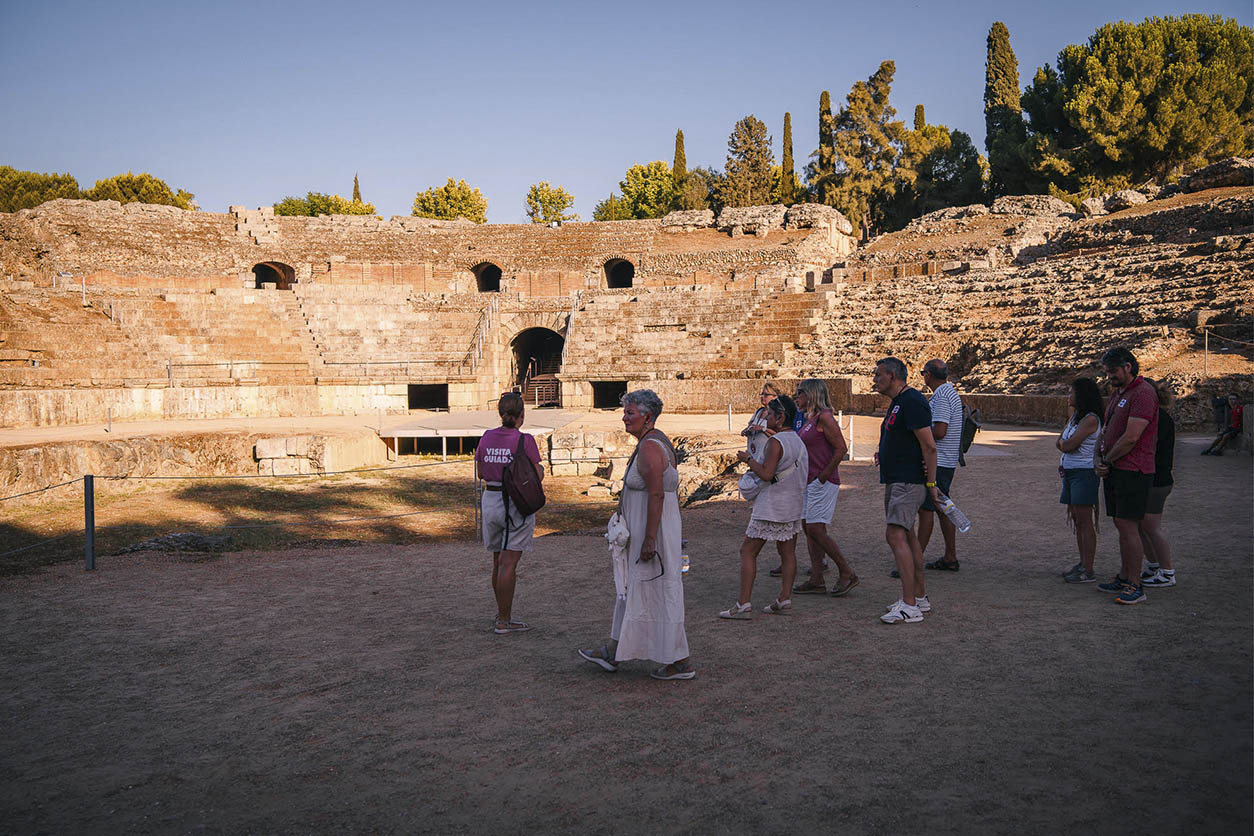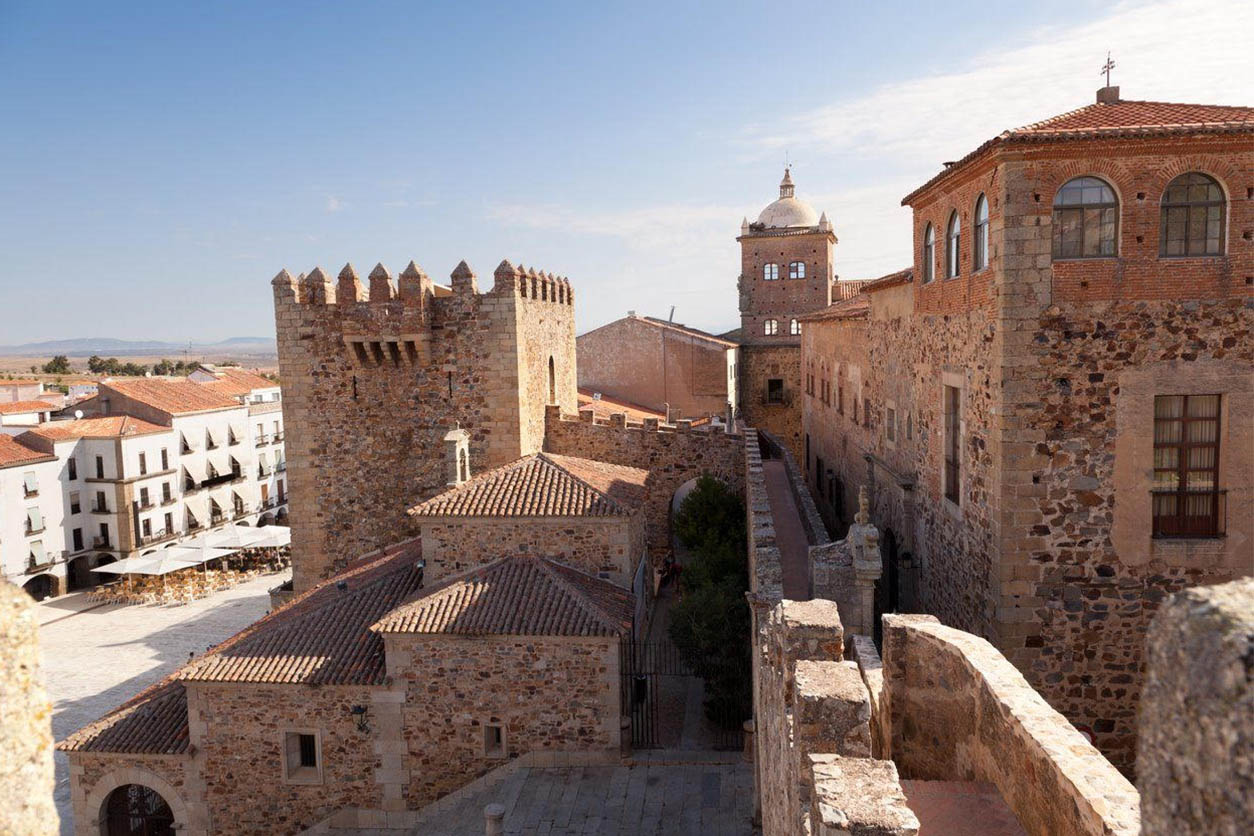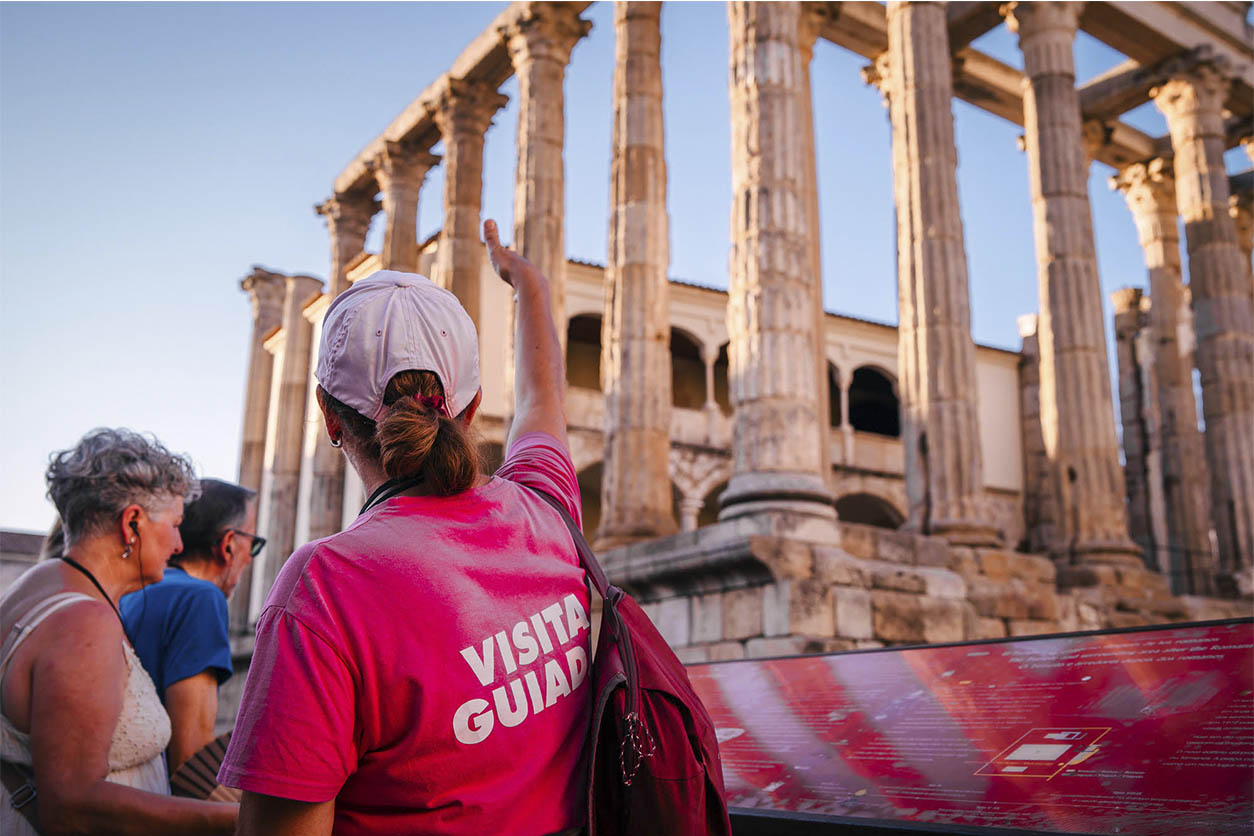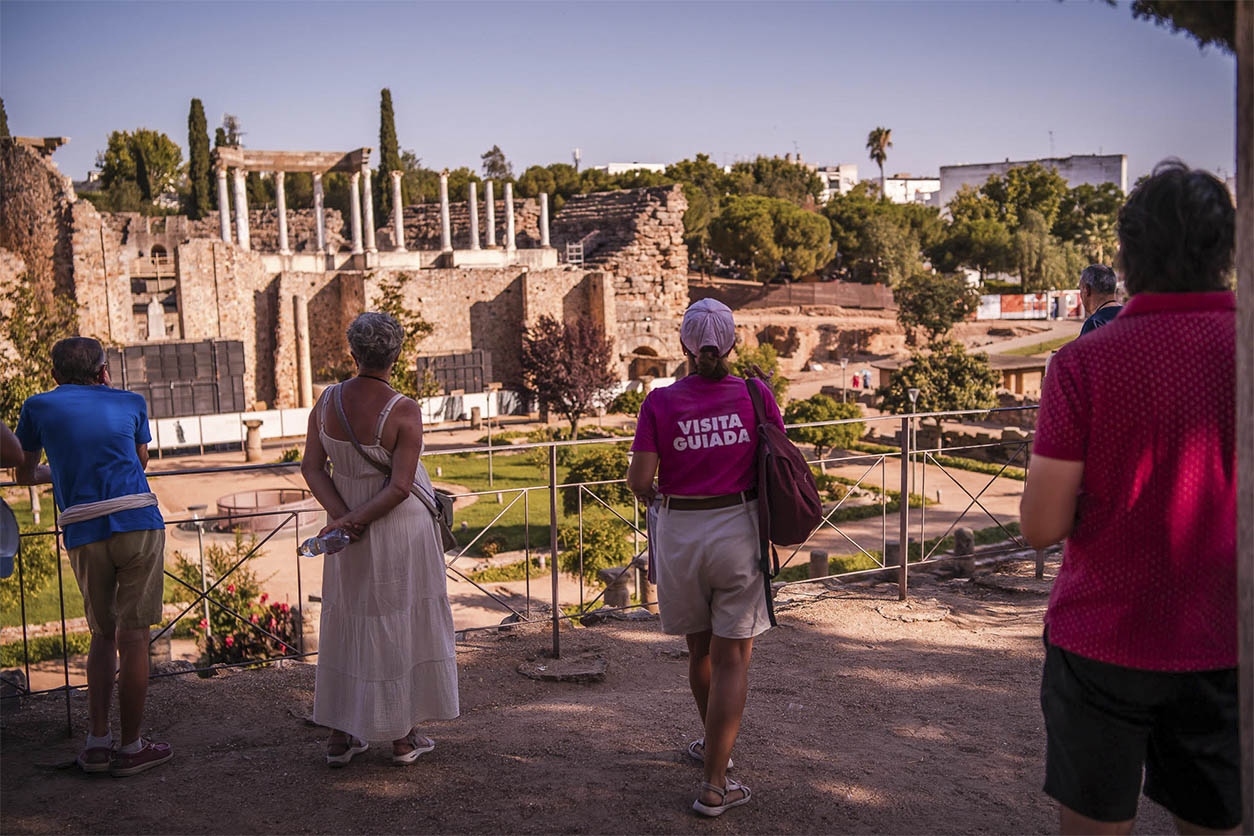Now more than a century old, Paseo de Cánovas is the veritable backbone of the city’s urban structure, not to mention the social life of Cáceres. It’s been a meeting place for generations of families, friends and residents of the area since it was opened in 1895 to link the city to the new railway station. Over the years, through every changing season, its leafy trees have quietly watched over things, timeless witnesses to the transformation, as a place that was once home to the owners of small mansions and to the local bourgeoisie, with their more modern detached houses, gradually became a lively shopping area.
El Paseo Cánovas: the green space of Cáceres
Trees, shrub, flowers, fountains, sculptures, newsstands and promenades are all part of the natural eco-system of the century-old Paseo de Cánovas. The oldest trees in the park are acacias, along with a few banana trees, dating back to 1930. An aerial view of the promenade would reveal just how it spreads across the heart of the city like a green sheet.
As you head along the promenade, several monuments stand out before you: the monument to Juan Muñoz Chaves, well-known Spanish senator of years gone by, of a liberal bent; the monument to José María Gabriel y Galán, renowned writer and poet. There also is a bandstand, built in 1887, where the municipal band of Cáceres played for decades and where the authorities would sit during military parades and flag-swearing ceremonies.
These bandstands and newsstands were very popular towards the end of the 19th century. They were the place from which bands played for open air concerts, and were built along the lines of those erected in Victorian England, where musicians played in public promenades, parks and ponds, safe from the vagaries of the weather. Today, this bandstand has taken on a new guise: it is a bar with an open terrace where families and friends meet. There also are other popular kiosks to which people from the district flock.
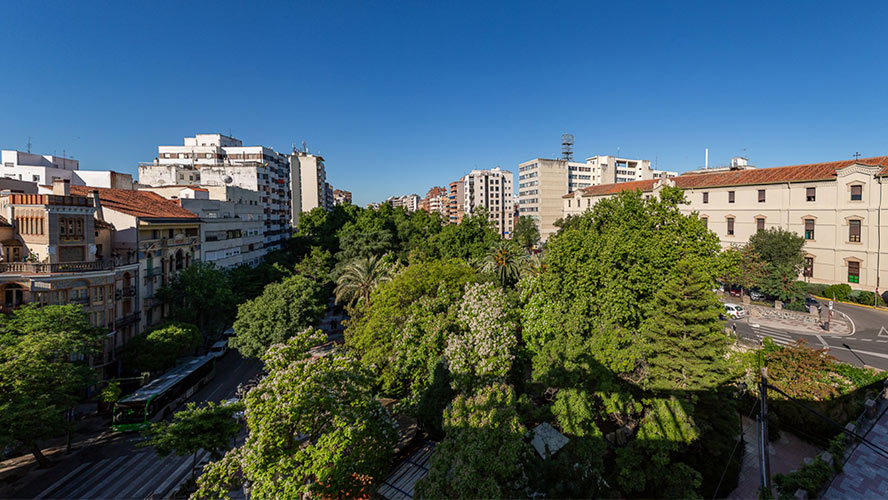
There are also several exquisite French-style fountains in the park. Perhaps the most striking is Fuente Central, which is lit up at night, especially during summer festivals or for special events. Built in 1965, it separates Paseo de Cánovas from Paseo Calvo Sotelo, another stand-out segment along the same avenue. The other two fountains of note, both classical in style, date back to 1940: Fuente de los Cisnes and Fuente de los Tritones.
There is also something for kids along the promenade – two children’s parks: Cánovas and Cánovas III, both of them equipped with multi-coloured, cushioned flooring.
Shopping on Paseo de Cánovas
This promenade is not only a place for rest and relaxation with friends and family, or for light sporting activity. It also is one of the best places for shopping in Cáceres. There are all types of shops along the avenue, from small, local clothes stores and shoe shops, to big franchises, bookstores, shoe stores and restaurants where you can get something to eat after a day visiting the city.
When it gets cold, and Yuletide approaches, the promenade becomes home to a quite big and colourful Christmas flea market, with lots of stalls selling handicrafts and all manner of typical food products. The City Council also sets up a flea market along the promenade during Womad, an intercultural arts and music festival that runs throughout many different provinces in Spain.
A bit of history about Paseo de Cánovas
When Paseo de Cánovas was opened over 120 years ago, the city did not go beyond the old San Antón hermitage, demolished at the end of the 19th century, along with the oxen blacksmith’s.
The promenade was designed with the advent of the first railway station, a few miles outside the city. That new communications nucleus meant that Cáceres was no longer as isolated, and marked the beginning of an era of modernisation. The area known as Paseo de las Afueras de San Antón became a pleasant place for a park-stroll under the shade of trees.
For over a century, the soil was natural earth, until it was resurfaced with paved stone. Two years after being opened, it was named Paseo de Cánovas, after Spanish Prime Minister Antonio Cánovas del Castillo, killed by an Italian anarchist in 1897.
The old rural space, which used to be taken up by crop fields and walled off for cattle, was fully overhauled when the publicly funded Avenida de España was built – two separate streets laid down on either side of the promenade for the staging of official events, like military parades.
A bourgeois district with a modernist outlook
The avenue did not, however, serve simply as the element of nexus between the city and the railway station. It soon proved to be of greater urbanistic utility. The local bourgeoisie decided to build their houses here, for residential purposes, sharing the space with the three buildings that were there at the time: The Provincial Hospital, the Parador del Carmen and the Hermanitas de los Pobres home for elderly people.
Today, the city of Cáceres has beautiful modernist buildings of undeniable architectural splendour, built in the late 19th/early 20th century. Some of them still stand in Paseo de Cánovas: El Chalet de Los Malaga, built in 1932; the building at 5, Avenida de España (erected in 1927); Casa de los Picos, at number 7 (in 1937); many others, however, were demolished.




































































